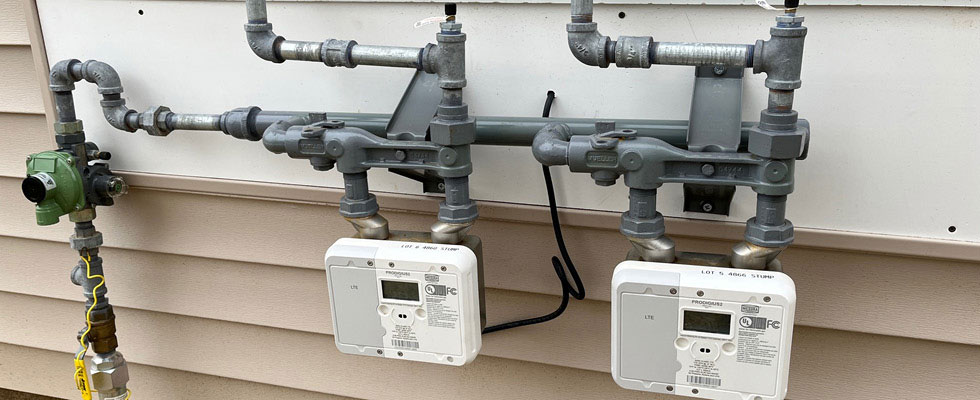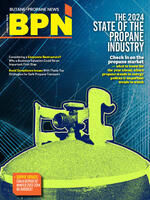
Metering has always been an outlier in the propane industry. It was seen as an unavoidable nuisance to cover a specific circumstance that could not be otherwise solved through the standard and simple business model of “I deliver your propane and you pay when it’s delivered.” It was mostly used for strip malls where there wasn’t a place to put individual propane tanks or for community systems with a central set of tanks feeding a local neighborhood. It existed and was tolerated, but not desired or sought after. Metering was for natural gas, while pay-by-the-delivery was for propane. It had been this way for over a century in the propane world — it was just the way things were. It was part of our DNA. In the meantime, the world moved on.
Think about the state of tank monitoring a little over a decade ago. It was a novelty that might have had a place for a large, important customer or a property that was remote and inconsistent with use. It was hard to make the argument that placing these at all accounts could significantly improve your business model. The investment could never be recovered. It was a waste of money and created more work. The truck is out on Elm Street every other Tuesday anyway. It’s already part of the driver’s route; they can just stop and top it off.
That was then — now, nearly all employees within a propane company can explain the reasons why tank monitoring is an integral part of their business. They understand and appreciate delivering propane where and when it is needed.
Propane metering is going through the same transformation. Novel arguments for metering made here will seem elementary in a few years. They will be obvious in the future, but they are not right now. When we’ve done something a particular way for a long time, it can be hard to see there might be a better way. That’s what I propose today.
We live in a world of monthly subscriptions and payments. Video and music streaming services, gym memberships, a streaming exercise bike, box services for pre-arranged meals or clothing, premium podcasts, and a GPS app for golf courses are all monthly bills that today’s consumers expect. These are regular and expected and can fade into the background noise of life in the 21st century. Other services are already monthly: car payments, rent or mortgage, cable, electricity, water and natural gas — all billed monthly, often automatically without the need of physically sending a payment. This is what today’s consumer is familiar with. It’s what they want.
Look at the expenses that are not monthly, and these are the pain points you’ll see discussed in the lunchroom: the increased cost of groceries, the price per gallon of gas, the unexpected medical bill, the one-time cost of band camp. Then there’s the last propane bill that came for 400 gallons right as the customer was trying to save money for Christmas. Ouch. These payments become like a patient triage — the important ones get taken care of first. You can’t have food until you pay for it. The gas station requires payment to put gas in your car. Your kid can’t go to camp until you pay up. Where do you think medical bills and propane delivery payments rank in that list? This becomes a problem for accounts receivable. The propane is already delivered and really can’t be taken back. A large bill a couple times a year is unpredictable and a shock to the system. Tank monitoring increased your efficiencies and allowed you to shift to twice-yearly deliveries to that customer on Elm Street instead of the monthly top-off. Now they have a harder time paying in 30 days.
Benefits of Metering
Putting a gas meter on these accounts offers a solution already proven by other utilities. Electricity, water and natural gas meter the goods used by the consumer and bill monthly. The invoice goes up and down based on the season, but it’s manageable and never for more than a month’s worth of product. If an account does fall behind, arranging a payment program to get caught up is a 30-day issue, not a six-months-of-product issue. You also get to charge for this fee. Unlike tank monitoring, which is a capital expenditure that you cannot recover directly and need to account for as a cost of business, a monthly metering fee is standard and expected. You can recover the initial cost of the meter as well as the administrative costs of billing monthly.
Beyond these customer-facing benefits, there are others to consider, like using your own tanks for storage. If you own the tank on your customer’s property, you’re already operating at a bit of a loss. In order for the account to be profitable, you need to recover the cost of the steel over a period in the profit margin of the propane. Until you’ve crossed that threshold, the account is an expense and not a profit center. Tanks are of course required, but because the transfer of ownership occurs when the propane is delivered, you are at the mercy of the customer. If they have a 500-gallon tank and have fallen behind, that account goes on will-call and the propane sits in the tank, unpaid for, and future deliveries are limited to will-call, pay-as-you-go. This is often for whatever minimum drop your company has. That customer on Elm Street is back to monthly small deliveries and is now slow to pay because they are working off a previous large bill. You are back to where you started and are actually carrying more on accounts receivable.
With metering, you can use the tanks you own in the field for additional storage. If you have just 60 metered accounts with 500-gallon tanks, you have opened up an additional 30,000 gallons of storage. This is the size of a bulk plant tank. This is a place to put product in the hot summer months when it’s hard to get anyone to take a delivery and you’re trying to fill your summer allocation gallons.
Instead of purchasing more storage and filling it with product that you will need to truck to the customer when the weather turns cold, you can stage it on location so when the first frost hits, you aren’t depleting your reserves and putting drivers through the stress of overtime and worrying about hours of service. The product is already in your tank at the customer’s location. You are staged and ready to go. Elm Street is full, they’re caught up on their bill, their metering fee is paying off your investment and they can manage their monthly payment from the data you receive remotely in your office from the connected smart meter. You’re billing in cubic feet instead of gallons, so there’s no price shopping with the propane company down the street, and your bill fades into background conversation in the lunchroom.
Maybe band camp will find a solution someday as well


